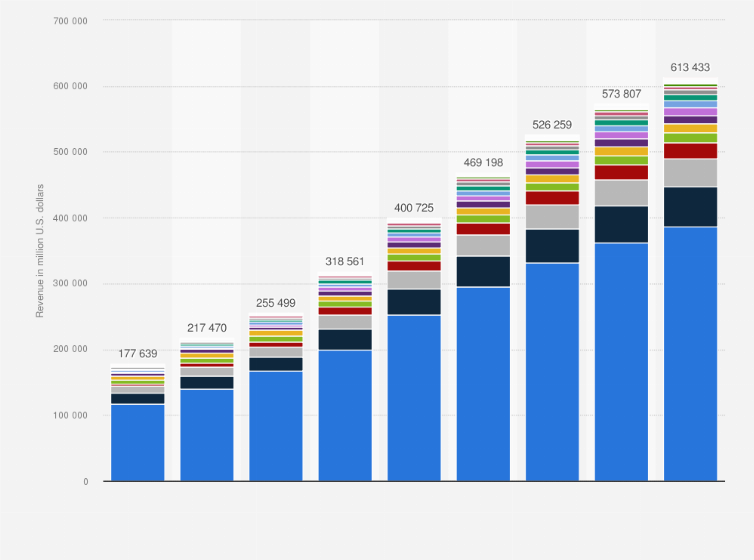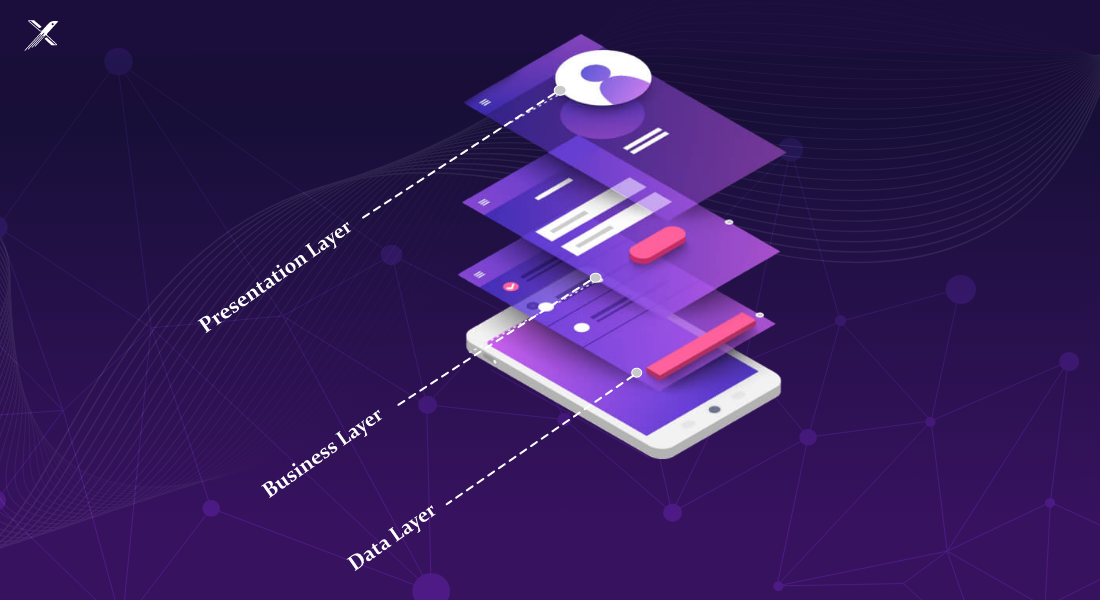Digital Transformation Consulting: Cost, Strategy,...
October 13, 2025

Building a solid foundation is essential, particularly when creating mobile applications. Businesses increasingly concentrate on developing apps that successfully target their intended audience. The rivalries are intense.
High levels of competition push companies to constantly enhance their offerings, making them more accessible, quicker, and more convenient. One of the best strategies to increase brand awareness and gain the desired position in customers’ mobile devices is to build a mobile application. If you are planning for mobile app development for your business then have a look at the blog. It will help you to understand the basic mobile application architecture.
Everything that makes a program unique, such as the method used to communicate data.
In essence, it’s a method for defining organized app ecosystems. Integrated systems and their flexural modulus are built using a combination of their structure and the corresponding interfaces. This can also refer to app skeletons that show how the functionality and caliber of a product are determined. Everything that makes a program unique, such as the method used to communicate data.
Before development can begin, the architecture of a mobile app must go through an exceedingly thorough procedure. The recommendations in the following advice must be adhered to throughout the mobile app development process in order to provide a well-designed program that is simple to use. Mobility is becoming an epochal necessity. The smartphone has a great impact on everyone, from booking a flight or movie tickets to shopping from your couch or ordering your favorite meal from a restaurant to discovering new things to paying the bill.
IOS and Android have the most number of users in the world. If you want people to pay for the use of your app then you should go with IOS app development and if you are planning to target a mass audience and just want to create your brand impression in the market then you must go with the Android app development.
You can hire the best android app developers as freelancers for your app development or you can also avail services from an android apps development company. The same applies to the IOS app development.
To move forward let’s have a look at some of the major statistics for mobile application development across the world.
All mobile apps are expanding. By 2023, $935 billion is anticipated to be generated globally via mobile apps.
Have a look at the mobile apps worldwide from 2017 – 2025

Source – statista
By looking at the above statistics, it is clear that the scope of investing in a mobile app is really broad if you consider it in long term. Moving further, let’s have a look at some important elements which should be considered while making a mobile app.
When creating a mobile app, decide on the platform first (iOS, Android, Windows, or Cross-platform), and then take into account the many smartphone models that are available today. These are crucial facts that can be used to choose the best development proportions.
Make sure to consider these important aspects when designing mobile apps-
Try to give your users a consistent experience on the platform on which you choose to release your app. These factors are important for you as a service provider. In this competitive era, each small factor plays a crucial role in making your brand a success.
When building the tech stack and designing the architecture of mobile apps, development frameworks are taken into account. For the development of web apps, including for the front-end and the back-end, frameworks offer libraries, basic layouts, and components.
Frameworks like Bootstrap, React, Vue, and Angular, is used to create mobile apps and for the back-end, the frameworks like Django, Flask, Laravel, Xamarin, Swift, React Native, and Flutter, are dependent on the target platforms and programming language of choice. You can go for app development services to get a better idea about the frameworks which you can use for your application development.
It’s crucial to conduct user research to learn more about the intended audience. Users encounter various bandwidth restrictions around the world, with some nations using 5G and others still having sporadic access. For example, a highly engaging, graphically intensive app will not be suitable for apps that cater to rural people.
Design is crucial for creating positive first impressions (a great user interface) and retaining users. Online success depends on having a good user experience (UX) design, but mobile UX is challenging due to the shifting user expectations and best practices of each operating system and device type.
In the design stage, the mobile app architecture must strike a balance between UI and UX. To make sure the app is providing value, start by comprehending the fundamentals of mobile UX design and the newest trends.
Whether it is IOS application development or an android one, UI/UX plays a major role when it comes to attracting users.
The user’s first point of contact with the design is navigation, which has an effect on both the front end and the back end. A smart mobile UX design makes it simple for consumers to navigate the page and discover new areas. Navigation requires familiarity. The following best practices for navigation make the mobile app simple to use and lessen friction for customers:
Research and user input are the best ways to guarantee a positive user experience with navigation. Early testing of how the app appears and functions often includes the use of wireframes.
When it comes to notification frequency and technique, there needs to be a careful balance between poking people and aggravating them. The battery life of the device and user retention are both impacted by notification frequency.
Apps can send push notifications to end users’ mobile devices to let them know when there are new messages inside the app, either from the app itself or from other users. Push notifications are automatically enabled for Android users, while they must be enabled manually for iOS users.
Push notifications are the most effective and great marketing tool today which is helping businesses to attract users.
A three-layer architecture is among the most well-liked multilayer structures. The first three crucial layers are:

The UI process components are taken into account by the presentation layer. This layer’s main goal is to determine how the program will be displayed to the user. App developers must choose the appropriate client type that complies with the infrastructure while developing this layer.
The presentation layer includes both UI process components and UI components. The mobile app developer should specify how the app will seem to the end user when talking about this layer. At this stage, decisions regarding crucial elements like themes, typefaces, colors, etc. should also be made.
It stands for the essential portion of the mobile application that exposes features. In order to lighten the burden, the mobile application can remotely deliver the business logic layer to the user and backend server. The restricted resources on mobile devices are to blame for this strain.
The layer primarily concentrates on the commercial front. Under the hood, the business logic layer houses entities, business components, and workflows.
Data utility shared data components, and staff members come together to form this layer. The data access layer supports secure data transactions and complies with application requirements. Because it might scale in the future, it is crucial to building this layer. As it has data access components, data helpers, and service agents, this data is considered to be in the third stage.
The right data format should be chosen, and a robust validation method should be implemented, as the other consideration for developing this layer. Your app can be shielded from bad data entry in this way.
The mobile app developer should concentrate on separating the presentation layer code from the business logic.
It’s not as difficult as it seems. You can hire a mobile app development company for better support and guidance but if you want to decide on your own, make sure to consider these things before moving forward. When finalizing the design architecture of a mobile device, consider the following:
Any mobile app’s architecture and tech stack must be carefully taken into account for it to be successful. Planning which features to incorporate into the app, how to include them, and how those features will be related through layers can be facilitated by paying attention to your business needs and user stories. There are many aspects to consider, and if the wrong assumptions are made, the app may not live up to expectations.
Contact us if you want to avail app development services and shorten the time it takes to get your app to market, don’t have the internal staff to build it, or just want to leave it to the professionals who have hundreds of hours of expertise building native, hybrid, and cross-platform mobile apps.